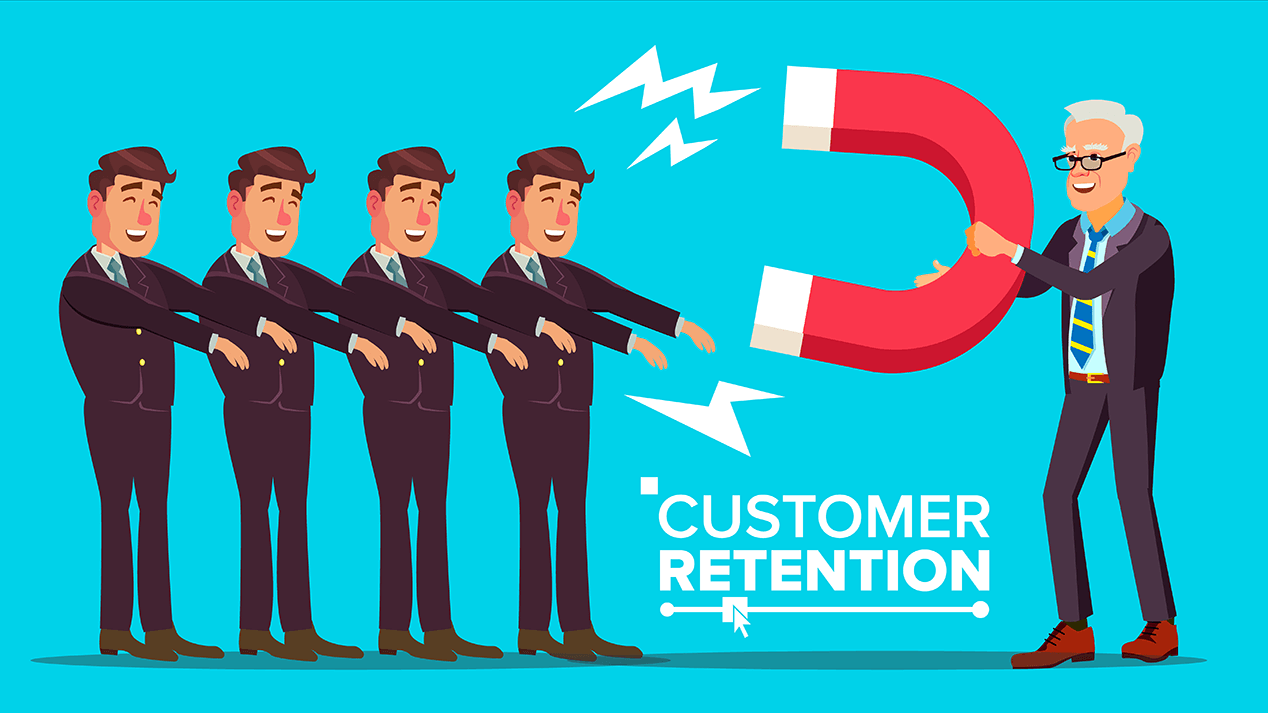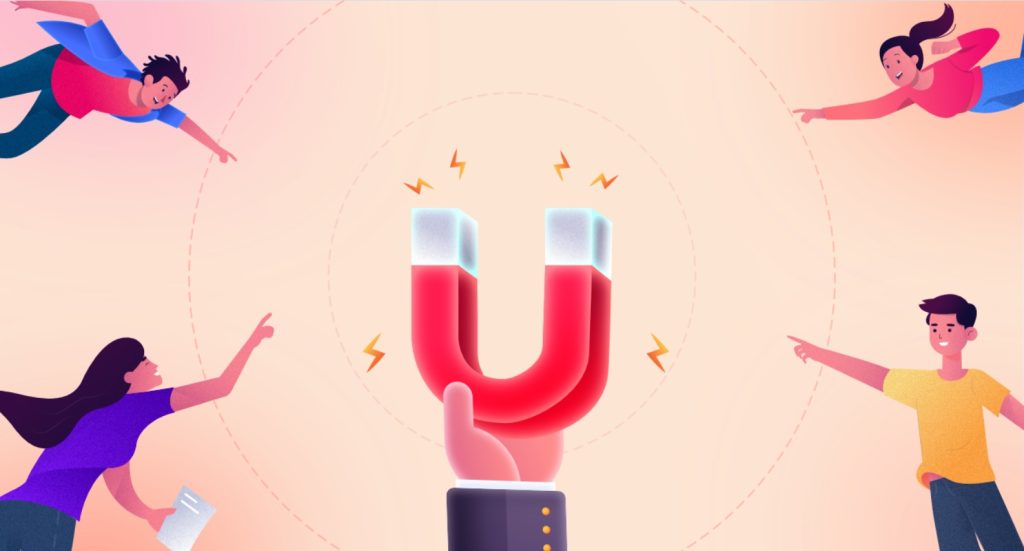
Keep Your Customers Even When They Have Returns
Keep your customers even when they have returns – it’s a challenge many businesses face. Returns are a natural part of the e-commerce landscape, but they can be a major headache if not managed properly. A smooth return process can actually strengthen customer loyalty, turning a potentially negative experience into a positive one.
This means understanding why customers return products, creating a seamless return process, and even using return data to improve your products and services.
In this post, we’ll explore the psychology behind returns, dive into strategies for handling them effectively, and discover how to build customer loyalty despite returns. We’ll also look at how to analyze return data to gain valuable insights and prevent future returns.
Understanding Customer Returns

Customer returns are an inevitable part of online and offline retail. While they can be a source of frustration for businesses, understanding the reasons behind them is crucial for improving customer satisfaction and retention. By analyzing return patterns and the psychology behind them, businesses can implement strategies to minimize returns and enhance the overall customer experience.
Reasons for Customer Returns
Customer returns can stem from various factors, both controllable and uncontrollable by businesses. Understanding these reasons is essential for identifying areas of improvement and implementing effective solutions.
- Product Dissatisfaction:This is the most common reason for returns. Customers may return products due to issues such as poor quality, incorrect size or fit, faulty functionality, or simply not meeting their expectations. For example, a customer might return a pair of shoes because they are uncomfortable or a piece of clothing because the color is not as vibrant as it appeared online.
- Change of Mind:Customers may change their minds about a purchase after receiving it, especially if they are unsure about the product or have found a better alternative. This is particularly common with impulse buys or products purchased online, where customers have limited opportunities to examine the product before purchasing.
- Shipping Errors:Incorrect or damaged products delivered to customers can lead to returns. This can happen due to mishandling during shipping or errors in order fulfillment. For example, a customer might receive a different product than the one they ordered or a product damaged during transit.
- Promotional Offers:Some customers may return products after taking advantage of promotional offers or discounts, especially if they are not satisfied with the product’s quality or functionality. This can be a challenge for businesses, as they may have to absorb the cost of returns while still offering attractive promotions to customers.
Common Return Scenarios and Their Impact on Customer Retention
Analyzing common return scenarios can provide insights into customer behavior and its impact on retention.
- High Return Rate for Specific Products:This indicates potential issues with product quality, design, or fit. Businesses can address this by improving product quality, offering detailed product descriptions, and providing accurate size charts.
- Returns Within a Short Timeframe:This suggests that customers may be experiencing buyer’s remorse or are not satisfied with the product’s performance. Offering clear return policies and providing excellent customer service can help address this issue.
- Multiple Returns from the Same Customer:This may indicate a pattern of dissatisfaction with the brand or specific products. Identifying the root cause of these returns is crucial for addressing customer concerns and improving customer satisfaction.
Psychology Behind Customer Returns
Customer returns are not just a logistical issue but also a reflection of customer psychology. Understanding the motivations behind returns can help businesses develop strategies to minimize their occurrence.
- Cognitive Dissonance:Customers may experience cognitive dissonance after making a purchase, particularly if they have doubts about the product or its value. This can lead to returns as they seek to reduce the discomfort associated with the purchase.
- Perceived Risk:Customers may be hesitant to make a purchase if they perceive a high risk of dissatisfaction or loss. This can be exacerbated by online purchases, where customers have limited opportunities to examine the product before purchasing.
- Desire for Convenience:Customers may be more likely to return products if they perceive the process as easy and convenient. This highlights the importance of offering hassle-free return policies and streamlined return procedures.
Strategies for Handling Returns: Keep Your Customers Even When They Have Returns
A well-designed return policy is crucial for retaining customers and building trust. It’s not just about accepting returns, but about making the process easy and hassle-free for your customers. A smooth return experience can turn a potentially negative situation into a positive one, reinforcing customer loyalty.
Keeping customers happy, even after a return, is all about making them feel valued. It’s not just about the product, it’s about the experience. Remember, science says the more of this you give the happier you’ll be hint it’s not money , and that’s generosity.
Offer a smooth return process, maybe even a small gesture of goodwill, and you’ll likely turn a potentially negative experience into a positive one, building stronger customer loyalty in the long run.
Design a User-Friendly Return Policy
A clear and concise return policy should be easily accessible on your website and should be readily available for customers to access. This policy should address the following key aspects:* Return window:Specify the time frame within which customers can return items.
A reasonable window, such as 30 days, is common and provides ample time for customers to make a decision.
Return conditions
Clearly define the conditions under which returns are accepted. For example, specify whether returns are accepted for items that are damaged, defective, or simply unwanted.
It’s a common saying that customer service is everything, and that’s especially true when it comes to returns. Even the most satisfied customer can be turned off by a difficult return process. That’s why I always try to make it as easy as possible for my customers to return items.
And sometimes, a little escape is just what you need to get back in the mood for great customer service! A recent trip to the Ritz-Carlton Lake Tahoe reminded me of the importance of providing a luxurious experience, even when dealing with returns.
After all, a happy customer is a loyal customer, and that’s what we all want, right?
Return shipping costs
Artikel who is responsible for return shipping costs. Some companies offer free returns, while others require the customer to pay for shipping. Clearly communicating this information helps manage customer expectations.
Refund process
Explain the refund process, including the method of refund (e.g., credit to original payment method, store credit) and the timeframe for processing refunds.
Provide Detailed Instructions for Initiating Returns
Make the return process as straightforward as possible by providing detailed instructions on how to initiate a return. This can be done through the following:* Online return portal:Offer an online return portal where customers can initiate returns, generate a return shipping label, and track the status of their return.
This streamlined process provides a convenient and transparent experience.
Keeping customers happy, even when they need to return items, is a crucial aspect of building loyalty. It’s all about finding that delicate balance between ensuring satisfaction and managing costs. Just like navigating the complex geopolitical landscape, where a Pelosi trip to Taiwan could test China’s appetite for confrontation , businesses need to weigh the risks and rewards of their actions.
Ultimately, a smooth return process can go a long way in retaining customers and building a positive brand image.
Return forms
Provide printable return forms that customers can complete and include with their return shipment. These forms should include relevant information such as the order number, the items being returned, and the reason for the return.
Packaging guidelines
Provide clear instructions on how to package items for return. This might include recommendations on using original packaging, securing the item with appropriate packing materials, and labeling the package clearly.
Organize a Table with Different Return Methods and Timelines
| Return Method | Timeline |
|---|---|
| Online Portal | Typically processed within 2-5 business days. |
| Physical Store | Returns can be processed immediately at the store. |
| Mail-in Return | Allow 7-10 business days for delivery and processing. |
Building Customer Loyalty Despite Returns

Returns are a fact of life for most businesses, but they don’t have to be a negative experience. In fact, they can be an opportunity to build customer loyalty. By providing exceptional customer service during the return process and proactively resolving customer issues, you can turn a potentially negative experience into a positive one.
This can lead to repeat business and positive word-of-mouth referrals.
Turning Returns into Positive Experiences
A smooth and hassle-free return process can go a long way in building customer loyalty. Here are some tips for providing exceptional customer service during the return process:
- Make the return process as easy as possible. Offer multiple return options, such as online returns, in-store returns, and mail-in returns. Provide clear instructions and pre-paid return labels.
- Process returns quickly and efficiently. Customers appreciate prompt service, so aim to process returns within a reasonable timeframe. This will help to minimize any frustration or inconvenience.
- Offer a full refund or exchange. This is especially important for customers who are returning products due to defects or issues. By offering a full refund or exchange, you show that you are committed to customer satisfaction.
- Go the extra mile. Consider offering a small gift or discount to customers who return products. This can help to soften the blow of a return and make the customer feel valued.
Proactive Issue Resolution
Proactive issue resolution is key to turning negative experiences into positive ones. When a customer contacts you with a problem, take the time to listen to their concerns and understand their needs.
- Offer solutions that are tailored to the individual customer. Don’t just offer a generic solution. Take the time to understand the customer’s specific situation and offer a solution that will meet their needs.
- Be empathetic and understanding. Let the customer know that you understand their frustration and that you are committed to resolving the issue.
- Follow up with the customer after the issue has been resolved. This will show the customer that you care about their satisfaction and that you are committed to providing excellent customer service.
Incentives for Keeping Products
In some cases, you may be able to incentivize customers to keep products despite defects or issues.
- Offer a discount on the product. This can be a good option for customers who are willing to keep the product but are not happy with the price.
- Provide a free repair or replacement. This is a good option for customers who are experiencing a specific problem with the product.
- Offer a gift card or other form of compensation. This can be a good option for customers who are not satisfied with the product but are not willing to return it.
Analyzing Return Data
Return data is a goldmine of valuable insights that can be leveraged to improve your business in various ways. By carefully analyzing return patterns, you can gain a deeper understanding of customer behavior, product performance, and operational inefficiencies. This information can then be used to optimize product quality, enhance inventory management, and refine customer service strategies, ultimately leading to increased customer satisfaction and reduced return rates.
Identifying Common Return Patterns and Their Potential Causes
Analyzing return data involves identifying recurring patterns and their underlying causes. This can be achieved by examining the frequency of returns for specific products, categories, or time periods. For instance, you might notice a spike in returns for a particular product during the holiday season, suggesting issues with product quality or gift-giving expectations.
Similarly, a high return rate for a specific product category could indicate problems with product design, sizing, or marketing messaging. Understanding these patterns can help you proactively address potential issues before they escalate.
Comparing Product Return Rates Across Different Categories or Time Periods
Creating a table that compares return rates across different categories or time periods can provide a clear picture of your overall return performance. This table should include columns for product category, time period, total number of returns, and return rate.
This visual representation allows you to easily identify products or categories with higher than average return rates, which can then be further investigated for potential improvement opportunities.
| Product Category | Time Period | Total Returns | Return Rate (%) |
|---|---|---|---|
| Clothing | Q1 2023 | 150 | 10% |
| Electronics | Q1 2023 | 50 | 5% |
| Home Goods | Q1 2023 | 75 | 7.5% |
| Clothing | Q2 2023 | 200 | 12% |
| Electronics | Q2 2023 | 60 | 6% |
| Home Goods | Q2 2023 | 100 | 10% |
Using Return Data to Improve Product Quality
Return data can be a valuable source of information for improving product quality. By analyzing the reasons for returns, you can identify recurring issues with product design, materials, or manufacturing processes. For example, if a significant number of returns are due to product defects, it may be necessary to review your quality control procedures or work with your suppliers to address manufacturing inconsistencies.
This data can also be used to identify potential design flaws that lead to customer dissatisfaction, enabling you to make necessary adjustments before they become widespread issues.
Using Return Data to Improve Inventory Management
Return data can help optimize inventory management by providing insights into demand patterns and product popularity. By analyzing return rates for specific products, you can identify items that are prone to returns and adjust your inventory levels accordingly. This can help reduce the risk of overstocking slow-moving items and ensure that you have sufficient inventory of popular products to meet customer demand.
Using Return Data to Improve Customer Service, Keep your customers even when they have returns
Return data can also be used to improve customer service by providing insights into customer pain points and preferences. By analyzing the reasons for returns, you can identify common customer complaints and address them proactively. For example, if a significant number of returns are due to incorrect sizing, you can implement a more robust sizing guide or provide more detailed product information to help customers make informed purchasing decisions.
This data can also be used to tailor your customer service approach to specific customer segments, ensuring that you provide the right level of support and information to meet their individual needs.
Closing Summary

By understanding customer returns, creating a user-friendly return process, and using return data to improve your business, you can transform returns from a potential liability into a valuable opportunity. Remember, a satisfied customer is a loyal customer, even when they need to return an item.
By putting the customer first and making the return process as smooth as possible, you can build lasting relationships and keep them coming back for more.






